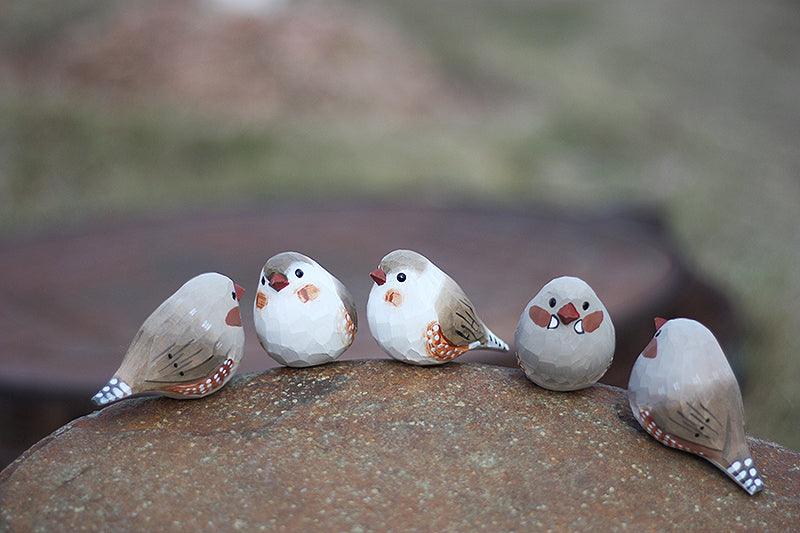
The Chirpy Charmer: Understanding the Zebra Finch
Share
A Glimpse into the Life of a Zebra Finch The Zebra Finch (Taeniopygia guttata) is celebrated for its vibrant markings and delightful singing, making it one of the most popular finches for bird enthusiasts around the world. Originating from the arid areas of Central Australia, this bird has adapted remarkably well to both wild and domestic environments.
Habitat and Distribution In the wild, Zebra Finches are typically found in the grasslands and forests of Indonesia and Australia, thriving in large flocks. However, due to their hardy nature and ease of care, they have also become a favorite in homes worldwide.
Appearance
- Plumage: Males are particularly striking with their black and white stripes resembling a zebra pattern on the throat and chest, bright orange cheek patches, and a light brown body. Females are less colorful but have the same sharp patterning in a more subdued palette.
- Size: Zebra Finches are small birds, typically measuring only about 10 cm in length, making them ideal for captivity due to their minimal space requirements.
Behavior and Social Structure Zebra Finches are extremely social creatures. They form tight bonds with their flock and can often be seen preening each other or calling in a series of complex chirps and calls. In captivity, they require social interaction, either with other finches or with their human caretakers, to remain happy and healthy.
Diet and Foraging These finches are primarily granivores, feeding on a variety of grass seeds and millets. In captivity, their diet can be supplemented with greens, vegetables, and fruits to ensure a balanced nutrition.
Breeding and Nesting Zebra Finches are prolific breeders and can breed year-round under the right conditions. They prefer to build their nests in enclosed spaces and will often reuse a good nesting site multiple times. Both parents are involved in raising the young, which makes them an excellent species for observing parental behavior.
Conservation Status Zebra Finches are currently not at risk in the wild, largely due to their vast range and adaptability to different environments. However, maintaining genetic diversity is crucial in captive populations to prevent health issues.
A Delightful Companion Whether chirping happily in a large aviary or flitting about in a home cage, Zebra Finches bring joy and vibrancy wherever they go. Their care needs are modest, making them suitable pets for both novice and experienced bird keepers.











